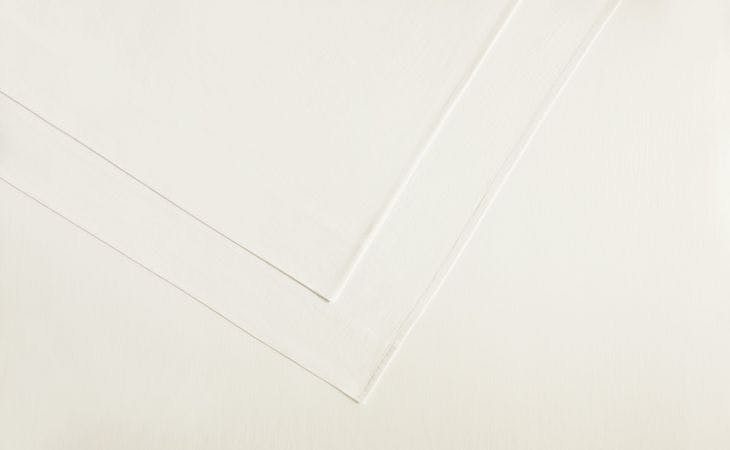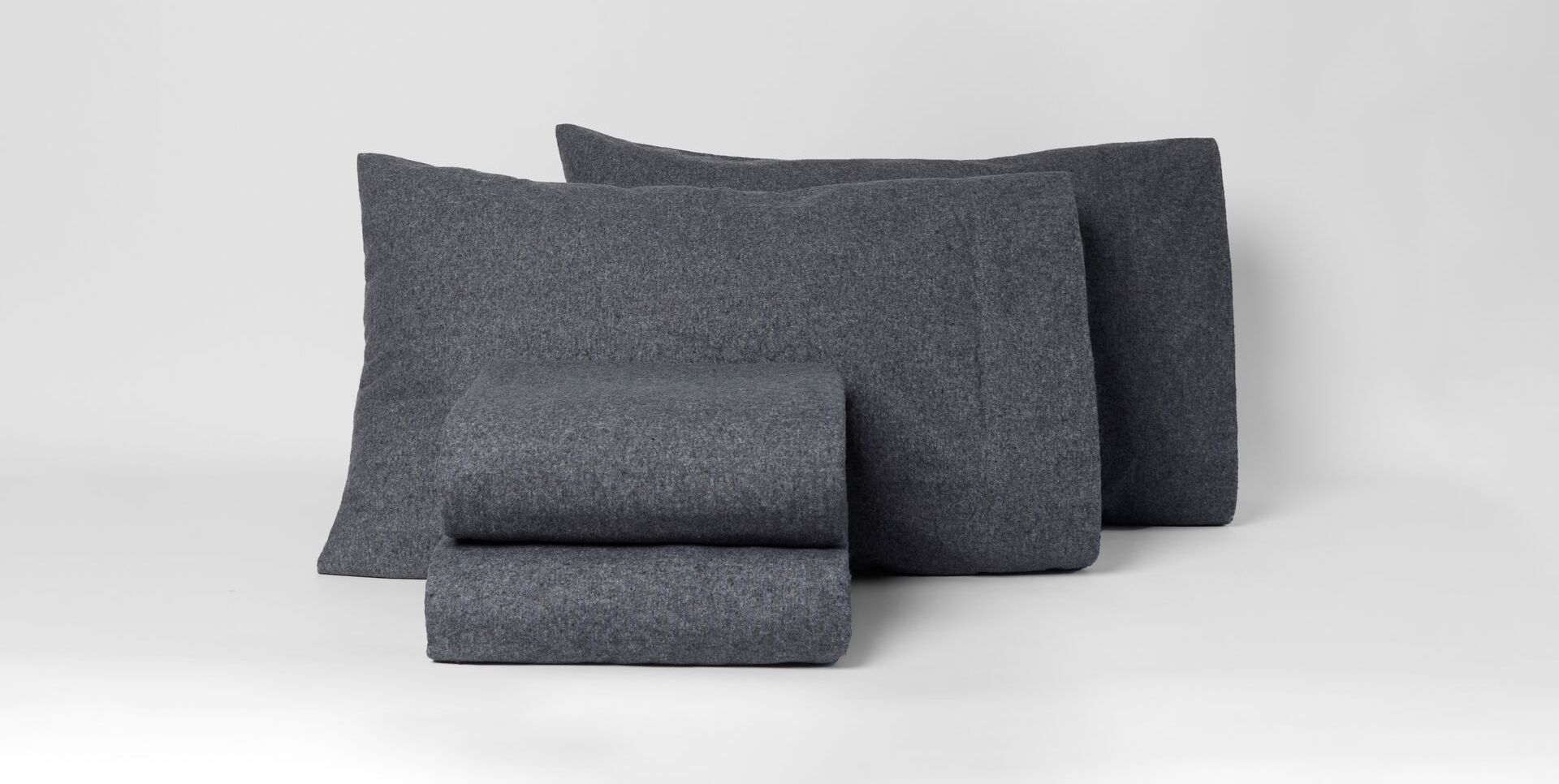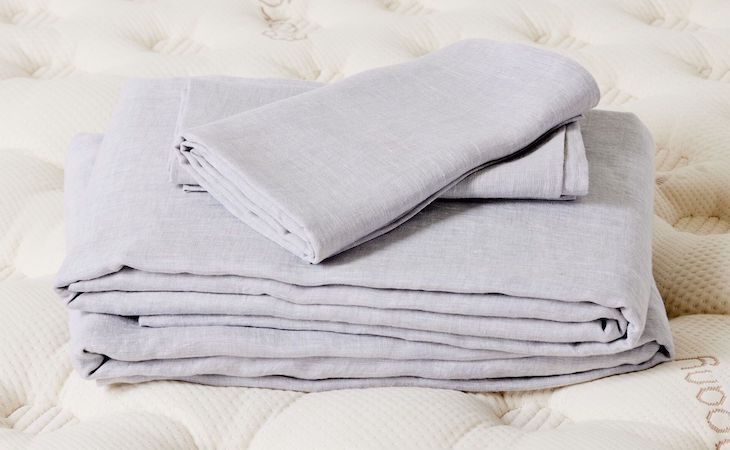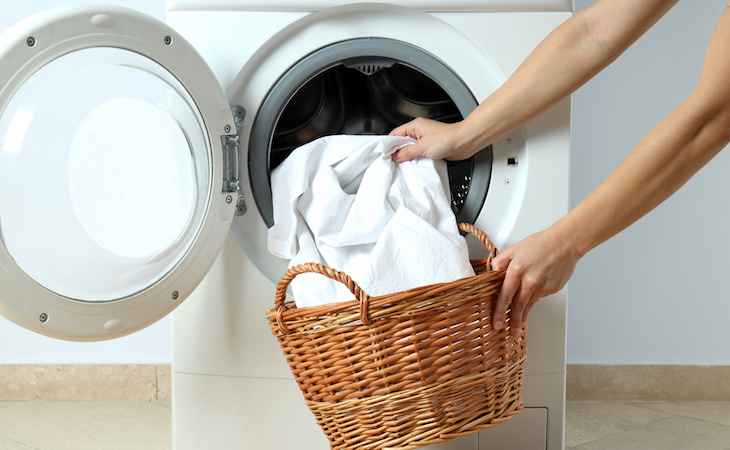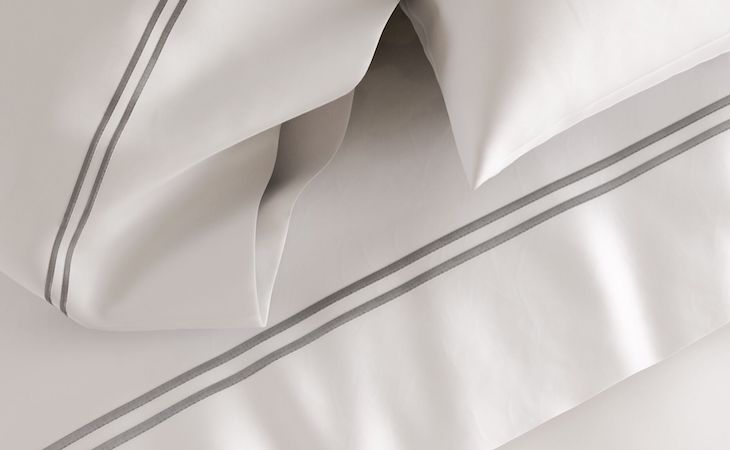When it comes to buying sheets, there are a lot of factors to consider. Everything from sheet material to thread count to weave to size to color are important. With so much to think about, it can be overwhelming to determine which sheets are best for you.
We’re here to help: We’ve put together a comprehensive guide to buying sheets to make it easy for you to find your perfect match. So check out our sheet guide below. It includes our best tips for buying sheets, answers to your most common questions about sheets, and more.
Choose the right sheet material
What your sheets are made from and the methods used to produce them have an impact on how they feel, how they fit, and how long they last. Here’s a rundown on the most popular sheet materials:
Cotton
The classic sheet material, cotton is a default fabric for sheets for several reasons. It’s not super-expensive, it’s easy to care for, and it offers breathability and moisture-wicking to keep you cool.
Microfiber
Microfiber sheets made out of polyester are soft and affordable. The drawbacks are that they don’t breathe as well as cotton or other natural materials and their synthetic nature make them less environmentally friendly.
Bamboo
Sheets made from bamboo-derived threads are soft and silky, but they can be more delicate—and often more expensive—than their cotton counterparts.
Even though bamboo is considered a green option, the most commonly used methods for manufacturing bamboo sheets include processes and products that can have an outsized environmental impact (think chemical-laden wastewater).
Linen
Fans of linen sheets like this natural material’s airy feel and superb moisture-wicking ability, but some people find it scratchy. It also wrinkles easily, so if you’re not the type to iron your sheets, you might want to take a pass.
One big consideration is cost: Due to the nature of the material, linen sheets come in at the high end of the price spectrum.
Silk
Silk is a 100% natural fabric made from the secretions of a silkworm. It’s soft, smooth, and lightweight. Silk sheets feel luxurious and are also hypoallergenic. However, silk sheets don’t absorb moisture as well as cotton or linen sheets.
Flannel
Flannel is a loosely knit fabric that can be made of wool, cotton, or synthetic fibers. Flannel sheets are a particularly good option for winter since they’re warm and cozy.
Flannel sheets are naturally soft to the touch due to the process called “napping,” during which the woven sheet of fabric is brushed by thousands of tiny metal brushes.
Understand thread count
People tend to get hung up on thread count, which refers to the number of horizontal (weft) and vertical (warp) threads in one square inch. While higher thread-count sheets can give you a silkier, more luxurious feel, they can also cost more and may not perform as well in terms of breathability.
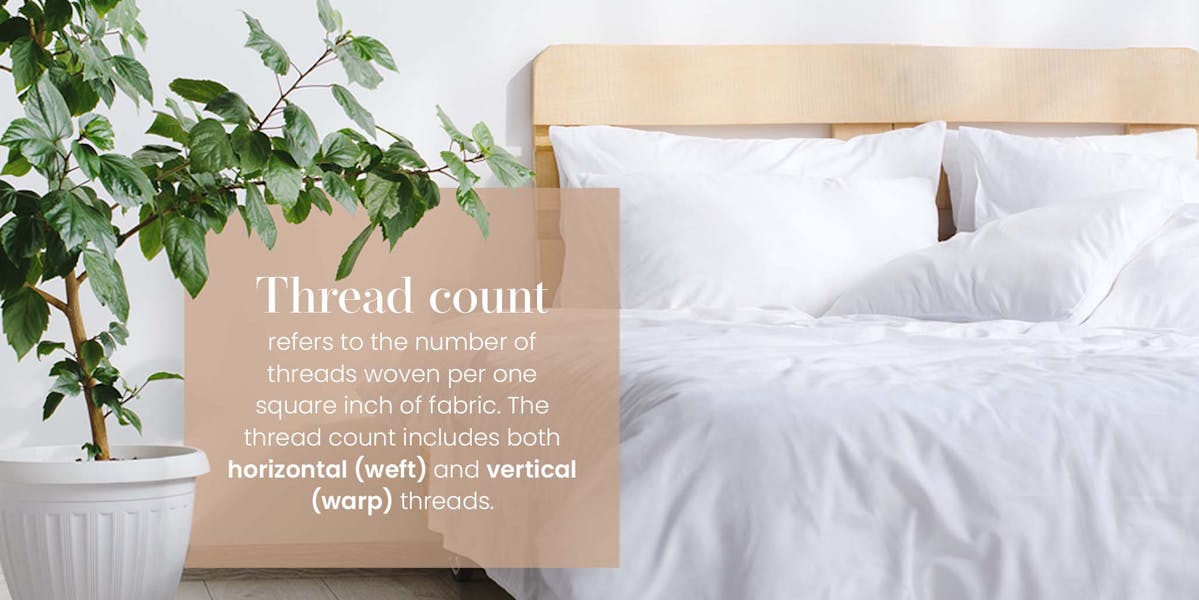
The National Sleep Foundation recommends a 400 thread count or less because anything more traps body heat and could cause you to sleep too hot.
Consider the weave
When you’re sheet shopping, you’ll probably run across the terms percale and sateen, which describe different ways the threads are woven.
Percale is a straightforward over-under grid, while sateen has an over-three, under-one pattern. This gives sateen sheets a better drape and an attractive luster, although some people prefer the “crisp” feeling of percale sheets.
Pay attention to fiber length
An equally important attribute is fiber length; longer fibers make for a softer and more durable fabric, even at a lower thread count.
Look for terms like Egyptian and Pima, which denote long-staple varieties, or read the manufacturer’s description to find out from what kind of cotton fiber their thread is spun.
Fun fact: Egyptian cotton is made from the plant Gossypium Barbadenese, which comes from the Nile River Valley, although it’s grown in other places now too. The cotton is hand-picked so the fibers stay intact, which creates long-staple threads that are longer than other cotton types.
Look at the ply
Besides thread count and fiber length, there’s also ply, a reference to how many yarns are twisted together to make one thread. With two-ply fabric, two yarns are twisted together to make one thread that’s then woven into sheets.
Single-ply threads are longer and stronger than multi-ply ones and result in lightweight, soft sheets that last a long time. Multi-ply threads, on the other hand, are typically made from shorter, weaker fibers and produce a yarn that’s coarser and heavier.
You can also get sheets made out of cotton jersey, a fabric in which the threads are knitted rather than woven. As a result, they don’t breathe as well, but they do have a cozy softness some people find appealing (think T-shirt material).
Take your sleep needs into account
It’s important to consider the type of sleeper you are when purchasing new sheets. Do you tend to run hot at night? Do you sleep on your stomach versus on your side? Do you have sensitive skin?
Your answers to these questions will help you figure out the kind of fabric, thread count, and weave to choose. Before you add a new set of sheets to your cart, here are some things to keep in mind when shopping for bedding. (Learn how the right sheets can make your bed feel more comfortable.)
The best sheets for hot sleepers
Cotton sheets are best for hot sleepers because they’re soft, breathable, and don’t irritate the skin.
Even if you don’t have issues with heat, choosing a lightweight material is ideal since cooler temperatures help you sleep peacefully through the night. Look for cotton with a thread count of 400 or less (anything higher than that can trap body heat).
Eucalyptus sheets and linen sheets are also ideal for hot sleepers. Eucalyptus sheets dry 30% more quickly than the average fibers of cotton sheets, while linen is lightweight and breathable. (Learn about the differences between comforters and blankets to find out which one is best for hot sleepers.)
The best sheets for cold sleepers
Made with cotton, wool, and synthetic fibers, flannel sheets are a great choice for the winter months or those who sleep cold year-round because they trap heat. Within the flannel category, wool flannel is an excellent option for cold sleepers.
Studies show a connection between sleeping in wool materials and an increase in sleep time and quality. That’s because wool not only helps to cool sleepers but works to regulate temperature in general, so nobody should feel too warm or too cold. (Learn about the differences between quilts and comforters to find out which one is best for cold sleepers.)
The best sheets for sensitive skin and allergies
If you suffer from eczema or have another skin condition that makes you susceptible to irritation, moisture-wicking sheets, like those made of bamboo, are a good option.
Bamboo sheets are made from—you guessed it—the bamboo tree and tend to be softer than cotton. Like cotton, bamboo has thermal-regulating properties that prevent overheating, helping you sleep better at night.
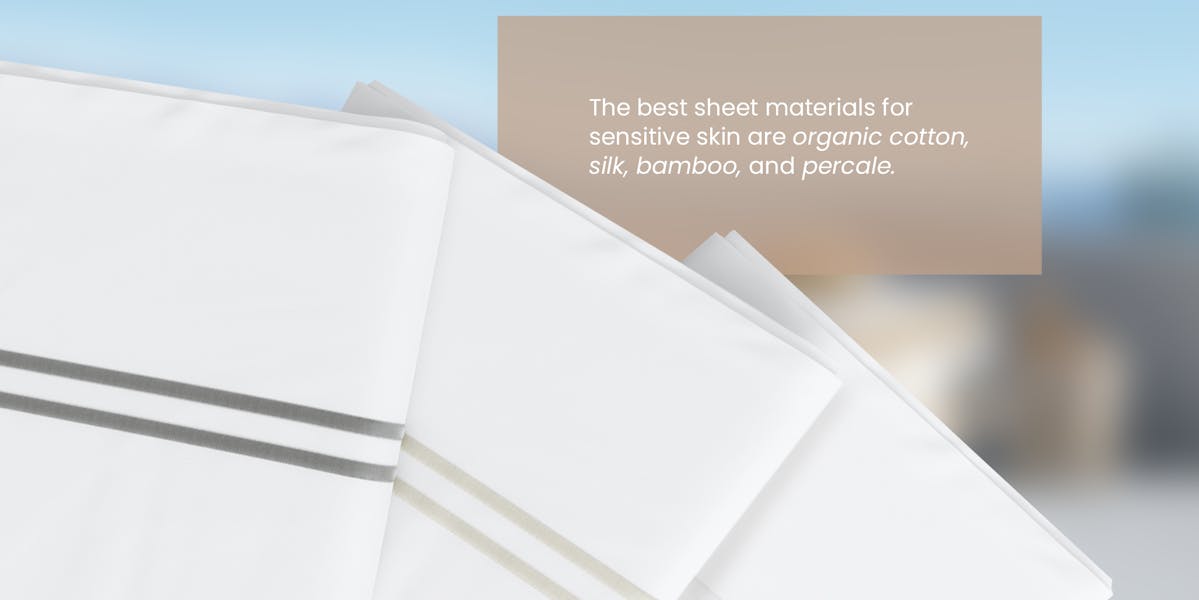
Bamboo is also naturally hypoallergenic, which means it repels dust mites and allergens. A good thread count for bamboo sheets is between 200 and 400.
People with sensitive skin or allergies should also use fragrance-free detergent and avoid fabric softeners and dryer sheets because they may have fragrances that can irritate the skin.
The best sheets for wrinkles and acne
Sleeping on your face, on your side, or on your stomach can increase your risk of developing wrinkles, but silk allows your skin to glide on smoothly and doesn’t absorb moisture, so your face creams and serums stay on your face—not on your pillow.
Silk pillowcases also cut down on hair tangling overnight so it’s a win-win for face and hair. Additionally, silk sheets are good for taming acne-prone skin. They have a softer and nicer feel compared to other sheets, such as cotton, which can be rough for pimple-prone skin.
Because silk sheets can be expensive, with prices upwards of $300 per set, satin is a good alternative as it’s much more affordable and offers similar benefits.
Pick the right sheet size for your bed
One of the most important factors to consider when buying sheets is size. After all, you want to make sure your sheets properly fit your bed.
Common sheet sizes
The most common bed sheet sizes are as follows:
- Twin sheets: 38” x 75”
- Twin XL sheets: 38” x 80”
- Full sheets: 54” x 75’
- Queen sheets: 60” x 80”
- King sheets: 76” x 80”
- California king sheets: 72” x 80”
Sheet depth
Before buying sheets, measure the depth as well. Make sure the fitted sheet has pockets deep enough to be a good fit for your mattress.
Regular sheets range from 7 to 14 inches deep, deep-pocket sheets are 15 inches deep, and extra-deep sheets are between 16 and 22 inches.
If you use a mattress topper, you might want to look for sheet sets with a fitted sheet advertised as extra-deep.
Select a sleep-friendly sheet color
Of course, you can get sheets in every color of the rainbow. But if you’re interested in environmentally friendly bedding, that might mean sticking to muted or neutral tones.
Sheets in bold or dark colors are dyed with chemicals to get their hue, whereas sheets made with nontoxic, chemical-free dyes tend to be lighter in color and more natural-looking.
The other thing to keep in mind about color is how well it can help you get to sleep at night. Surveys have found that blue hues induce a more relaxing effect. However, if you’re committed to white or off-white bedding, not to worry: Neutral shades also promote sleep-friendly tranquility.
Look at how and where the sheets are made
Much of the world’s cotton is produced in places with less-than-ideal conditions, so Fair Trade is another consideration.
Fair Trade advocates for transparency along a product’s supply chain so that raw materials can be traced from their origin to their destination. Fair Trade also supports workers by giving them the resources needed for economic empowerment.
Products that carry the Fair Trade Certified™ label are produced in Fair Trade Certified™ factories, with equipment and working conditions monitored and assessed regularly—and these factories have policies that give workers a voice when addressing issues or negotiating with management.
Learn more about Fair Trade and why it’s so important.
Read the return policy before buying
Before investing in a new set of sheets, it pays to check the retailer’s return policy, especially if you’re springing for a more high-end set or choosing a material with which you have less experience.
Your best bet is to buy from a retailer that doesn’t require returned bedding to be unused, so you can wash your sheets before trying them out. Expect to pay anywhere from $50 to $250 for a quality set of sheets.
Take care of your sheets properly
It’s a good idea to wash your sheets before using them initially. Many conventionally produced sheets come from the factory with a coating of chemicals; you’ll need to wash them out to get a sense of the material’s true texture.
Some shrinkage may occur after your initial wash, so you also don’t want to be surprised by this later on. After that, sheets should be washed once a week or every other week to get rid of dead skin cells, dust mites, and other microscopic-but-gross particles. (Read all about what’s living on your sheets in our guide to how often to wash sheets.)
Most sheets come with instructions to clean them in cold water, as this will preserve the fabric and extend the life of the sheets. But to kill germs, you’ll need to get your sheets hot. If you don’t want to launder them in hot water, throw them in the dryer after washing them in cold water.
Some selling points may not last as long as the sheets do. For example, sheets advertised as wrinkle-free achieve that thanks to an application of chemicals, which eventually will wear off after repeated washings. Some linen sheets also have coatings to make them softer, and those also will come off after a while too.
FAQS about sheets
How do I choose the right sheets?
Choosing the right sheets depends on a variety of factors. Fabric, thread count, weave, fiber length, and ply are all important attributes to look at when you go shopping. Your unique sleep needs will also help determine which sheets are right for you. Additionally, your mattress size and depth will play a role in the kind of sheets you should choose.
What is a good thread count when buying sheets?
The best thread count when buying sheets is between 200 and 400. Anything higher than 400 can trap body heat, resulting in uncomfortable sleep.
Is 1,500 a good thread count for buying sheets?
Be wary of high thread counts like 1,500. You can only get so many threads onto the loom—and to increase thread quantity, some manufacturers sacrifice thread quality. Just because a set of sheets has a 1,500 thread count doesn’t mean it’s a quality product.
How do I know what size sheets to buy?
Choose sheets based on the size of your mattress. You can find sheets in all the standard mattress sizes, including twin, twin XL, full, queen, king, and California king. If you have a thick mattress, choose sheets that are labeled deep or extra-deep to ensure proper fit.
How often should you buy new sheets?
We recommend replacing your sheets approximately every two years. If your sheets are frayed, stained, or faded, it’s time for them to go. (Here’s more on buying new bed sheets.)
Get high-quality sheets from Saatva
Saatva offers a wide range of high-quality sheets to help improve your sleep. From our
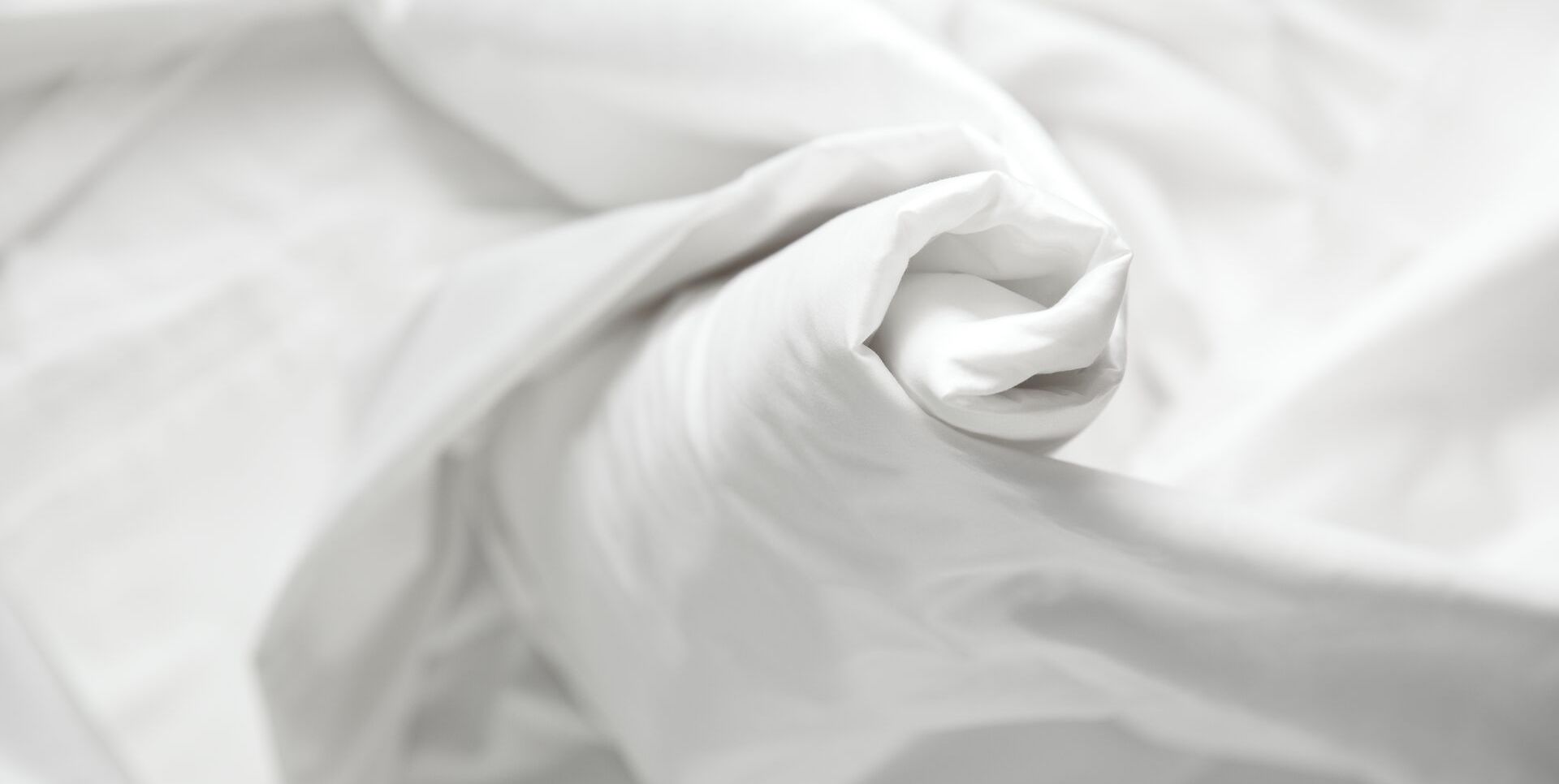
Organic cotton sheets with a timeless elegance
to our
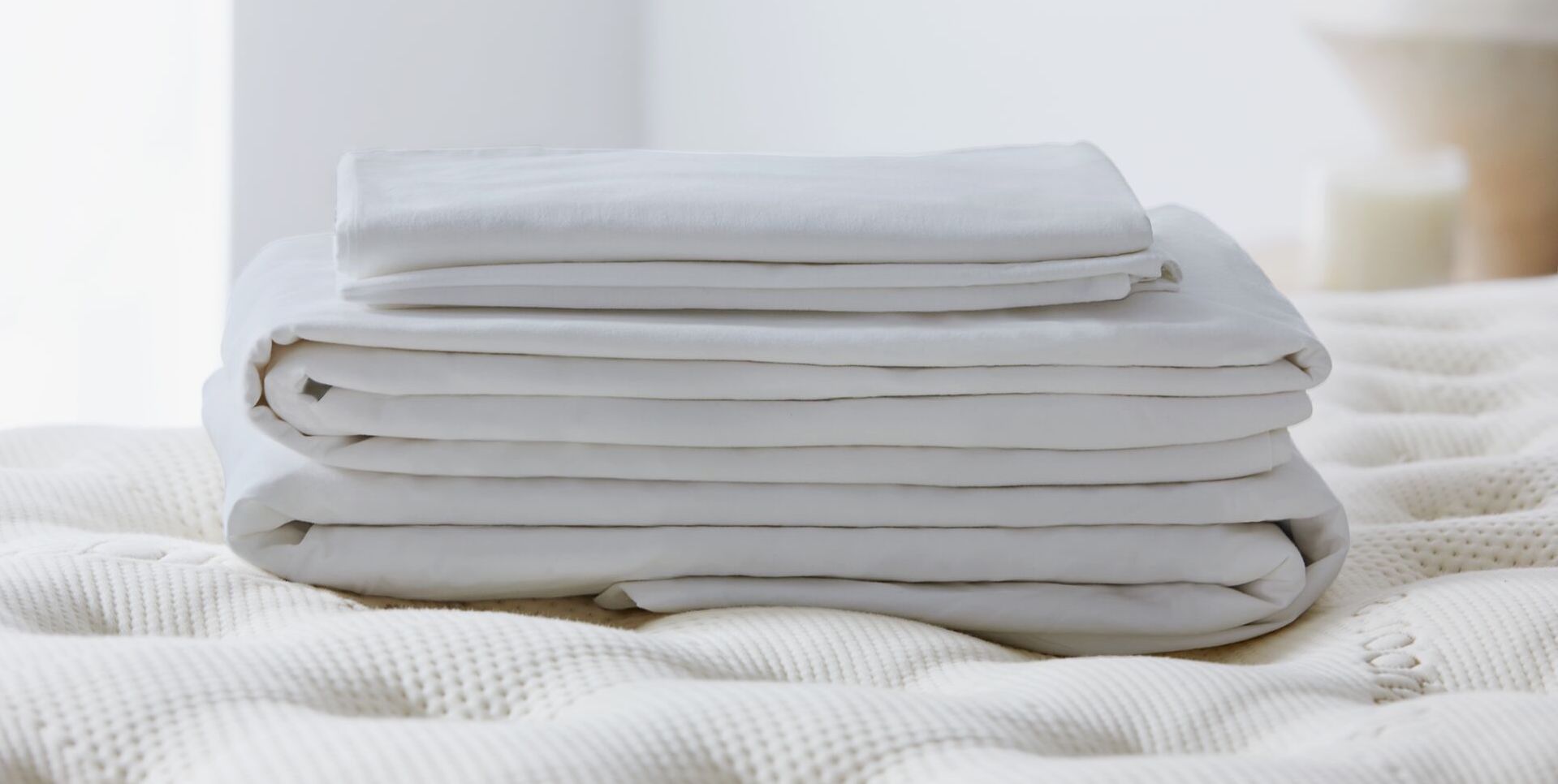
Crisp and cool percale cotton sheets with a luxe matte finish
to our
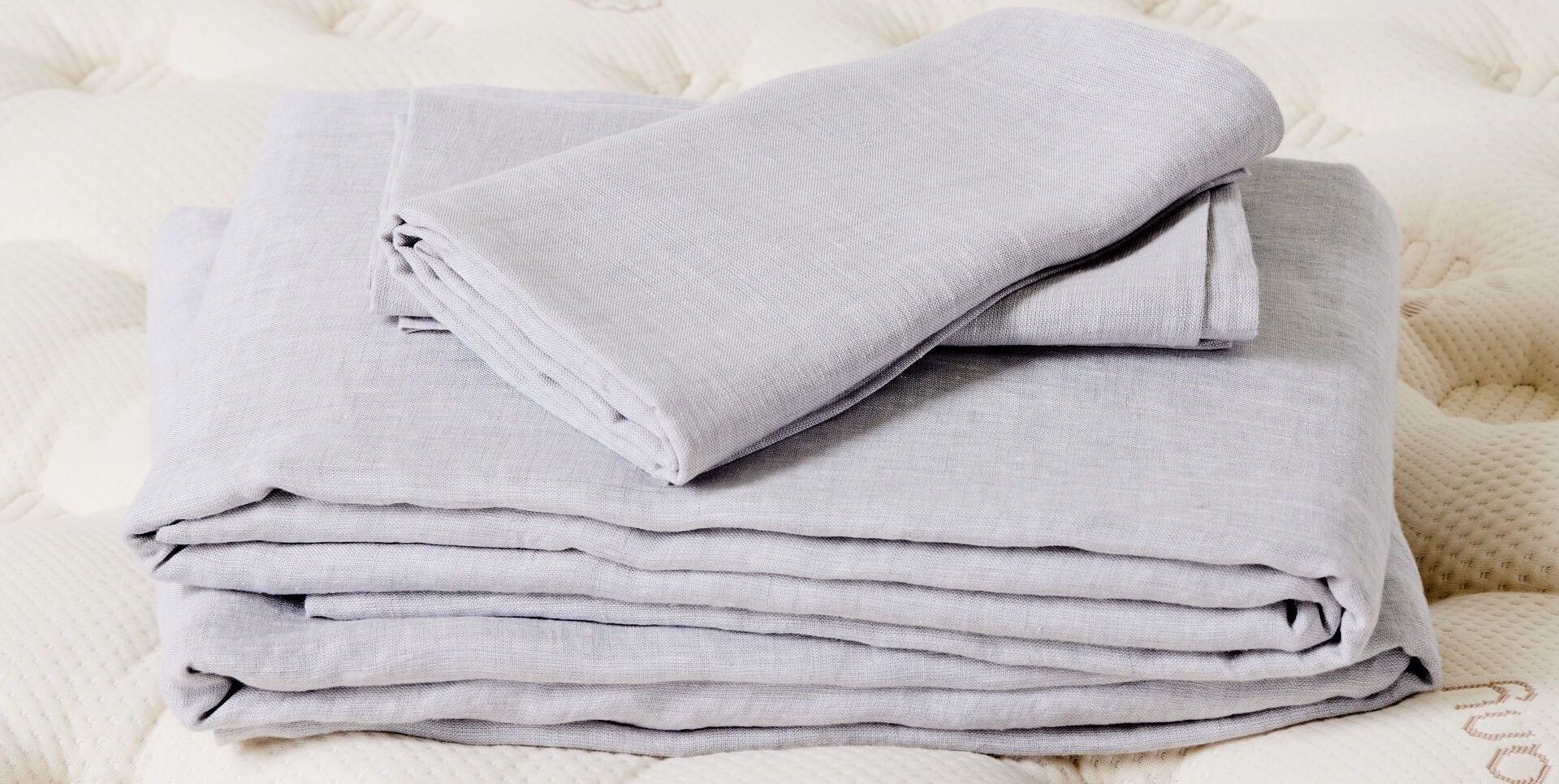
Airy and elegant linen sheets with a relaxed look
, you can find your perfect match with us.
All of our sheets are made from lightweight, breathable, and nontoxic materials that’ll keep you comfortable while you snooze. Plus, they come with a 45-day trial so you can test them out before deciding if they’re right for you.
Check out our bedding selection today to upgrade your sleep.






